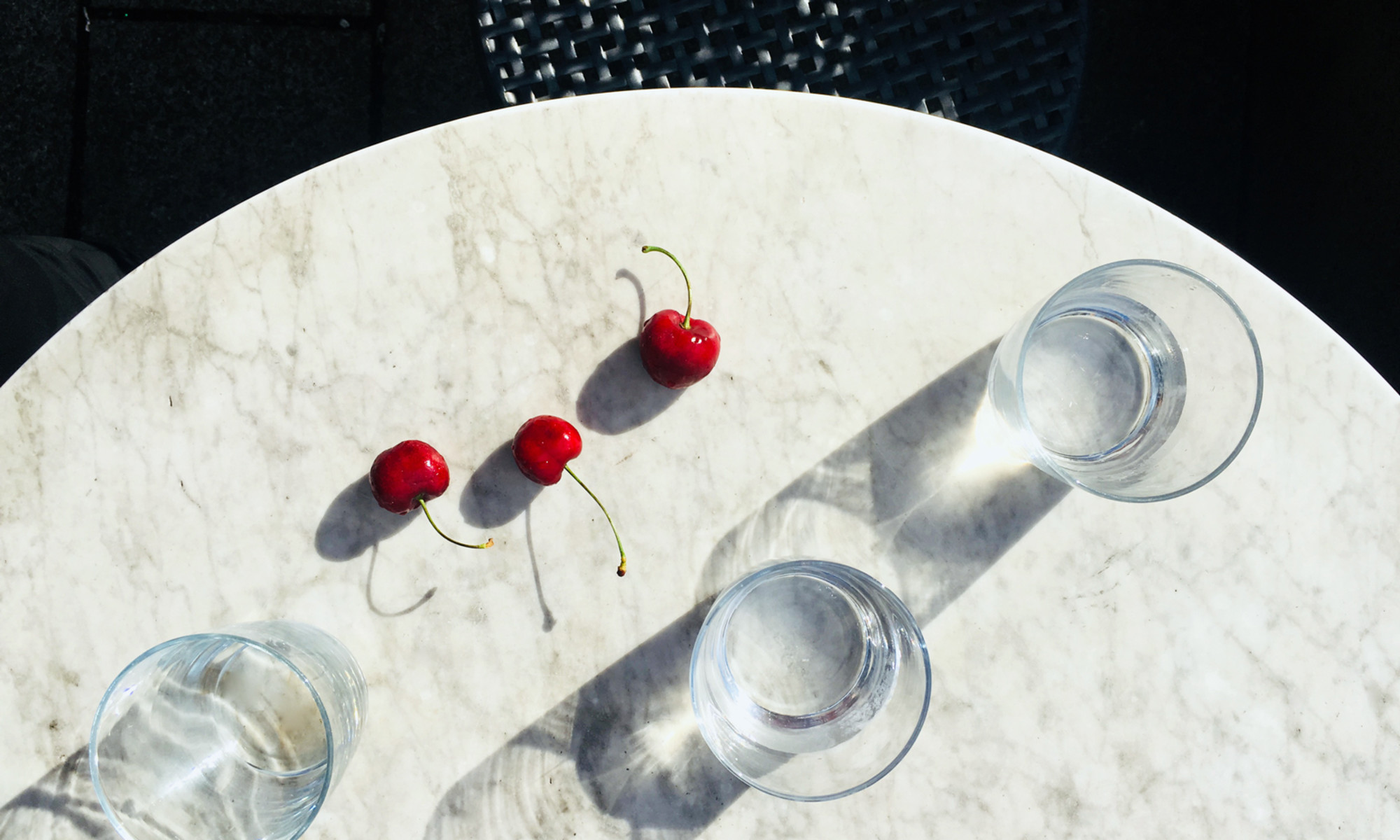Best of the Haiku Challenge (March 2025)
Announcing the winning poems from Tricycle’s monthly challenge The post Best of the Haiku Challenge (March 2025) appeared first on Tricycle: The Buddhist Review.

There is a slightly melancholy flavor to the season word “spring cleaning,” even though most people enjoy doing it. We find ourselves looking through drawers and boxes that haven’t been opened in years, inevitably stirring up a mess in the process. It isn’t the dusting that gets to us so much as what we dust. Mementoes. Gifts from old friends. The photo of a mother or father. Spring cleaning puts us in a reflective frame of mind, even if we whistle while we work. How could it not? Each of the winning and honorable mention poems for last month’s challenge explored the slightly wistful quality at the heart of this yearly “clearing” ritual.
Valerie Rosenfeld finds her way into springtime by getting rid of everything “that feels like winter.” Ryan Nichols discovers the paradox at the heart of spring cleaning when all that remains afterward is “a perfect mess.” Marcia Burton captures the lonely humor of a mop and bucket left out in the rain “getting a spring clean.”Congratulations to all! To read additional poems of merit from recent months, visit our Tricycle Haiku Challenge group on Facebook.
You can submit a haiku for the current challenge here.
Spring Season Word: Spring Cleaning
WINNER:
during spring cleaning
I get rid of everything
that feels like winter
— Valerie Rosenfeld
One of the hallmarks of 21st century haiku is the pairing of an “I” statement with a traditional season word to provide a surprising (usually biographical) turn of thought. This is nothing new. Bashō and Issa wrote haiku of this kind. As did Buson and Chiyo-ni. What’s different is the sheer volume of such poems in contemporary haiku. Which raises the bar for writing an original verse in that mode.
Spring cleaning is a ritual we engage in for a variety of reasons. Apart from the impulse to tidy up toward the end of winter, there is the fact that modern people accumulate an enormous amount of refuse in the course of ordinary life—everything from junk mail to last year’s fashions to appliances that have outlived their use or (think iPhones) been sidelined when something “new and improved” comes along.
Something about opening the windows on a beautiful spring day makes us want to “clean house.” In premodern cultures, spring marked the beginning of the year—a time for fresh starts and new enterprises. It was out with the old and in with the new. In this way, symbolically and practically, spring cleaning made room for whatever came next.
But that isn’t as easy as it looks. Attachments are numberless, and old habits die hard. And so, we must each find our own Marie Kondo-like rubric for deciding what stays and what goes. The haiku humor of the poem lives in that slant, slightly arch allusion to the Japanese TV personality and her international best-seller The Life-Changing Magic of Tidying Up.
The KonMari Method relies on a simple test for determining what to keep and what to get rid of: Does it bring you joy? “Identifying the things that make you happy,” she wrote, “that is the work of tidying.” Which is a neat way of sidestepping the dark side of the method—that it was designed for people living in developed nations who have more than they need to be happy. So much, in fact, that their stuff gets in the way of their being happy. We are a people whose closets and shelves, garages and self-storage spaces are hopelessly out of scale with the needs of a human life.
Last month’s winning haiku accounts for all of this. But its backward glance at the previous season acknowledges the deeper, more spiritual impulse at the heart of the season word “spring cleaning.” For it isn’t limited by that feel-good impulse to embrace what gives us joy. Rather, it allows us to examine its opposite.
“What feels like winter?” the poet asks herself while removing the detritus of her life. What is holding me back from lighthearted happiness in this season of rebirth and renewal? What do I need to let go of to move forward into spring?
It is noteworthy that the poet’s decisions are based on what “feels” like winter. It’s her subjective, haiku poet’s way of embracing that inner knowing that each of us has about those things—objects, habits, stuck ways of thinking, and whatever else—that keep us in winter, even as the world comes into blossom and birdsong fills the air.
HONORABLE MENTIONS:
after spring cleaning
the only thing remaining
is a perfect mess
— Ryan Nichols
left out in the rain
somebody’s mop and bucket
getting a spring clean
— Marcia Burton
◆
You can find more on March’s season word, as well as relevant haiku tips, in last month’s challenge below:
Spring season word: “Spring Cleaning”
this human body
responsible both for dust
and the spring cleaning
The human body sheds around five hundred million skin cells per day, making it one of the main contributors to house dust. It only seemed right that it should clean up after itself. — Clark Strand
Submit as many haiku as you please on the season word “spring cleaning.” Your poems must be written in three lines of 5, 7, and 5 syllables, respectively, and should focus on a single moment of time happening now.
Be straightforward in your description and try to limit your subject matter. Haiku are nearly always better when they don’t have too many ideas or images. So make your focus the season word* and try to stay close to that.
*REMEMBER: To qualify for the challenge, your haiku must be written in 5-7-5 syllables and include the words “spring cleaning.”
Haiku Tip: Use Two Phrases to Make One Poem!
There is an expression in Japanese haiku that translates “two phrases, one poem.” It refers to the fact that most haiku are created by pairing a seasonal expression with another element (usually nonseasonal) to create a poem that adds up to more than the sum of its parts.
This technique, also called juxtaposition, is so fundamental to haiku that some believe it to be the essence of the art. A poet places two images side by side that, taken together, suggest a meaning that neither one possesses on its own.
In practical terms, this involves crafting a poem with two parts. One part usually has five syllables, the other twelve—for a total of seventeen. The season word can appear in either part of the poem.
Using this month’s sample poem as an example, the first part consists of five syllables: “this human body.” The second is twelve syllables: “responsible both for dust / and the spring cleaning.” When paired together, the two parts suggest a turn of thought: that the human body is responsible both for the dust that accumulates in a home—and for cleaning up that dust.
It is the turn of thought that makes sense of the two phrases of a haiku, transforming them into a poem. But really, that is only the beginning. A successful haiku is one that invites the reader to explore the broader range of possible meanings suggested by its two phrases.
In writing the sample poem, I was sensible to the fact that most readers would know the words from Genesis that are often read at funeral services: “For dust thou art, and unto dust shalt thou return.” That was a heavy thought that might capsize a haiku on spring cleaning, so I didn’t lead with it. Still, beneath the humor, the thought of “this human body” coming from the Earth, only to return to the Earth, is there at the bottom of the poem.
A note on spring cleaning: In Haiku World, William J. Higginson observes that the Japanese equivalent of “spring cleaning” now occurs in winter, as families prepare for the New Year. Prior to the introduction of the Gregorian calendar in 1872, however, it marked the beginning of spring. In Europe and elsewhere, the same tradition prevails. At the end of winter, as the curtains and windows are thrown open, the accumulated dust and debris of “close living” inspires people to clean.
The origins of spring cleaning are of extreme antiquity, and nobody knows exactly when or where it began. The ritual has long been observed in religious contexts, including Judaism, where it is a part of the Passover tradition, and Catholicism, where church altars are cleaned in preparation for Good Friday.
Zen monasteries conduct a deep cleaning in springtime, but, in truth, they are kept spotless throughout the year. Here is a comical haiku I wrote some years ago about the monastery where I trained:
the temple is clean
now we get to start over
cleaning the temple

 BigThink
BigThink 





























